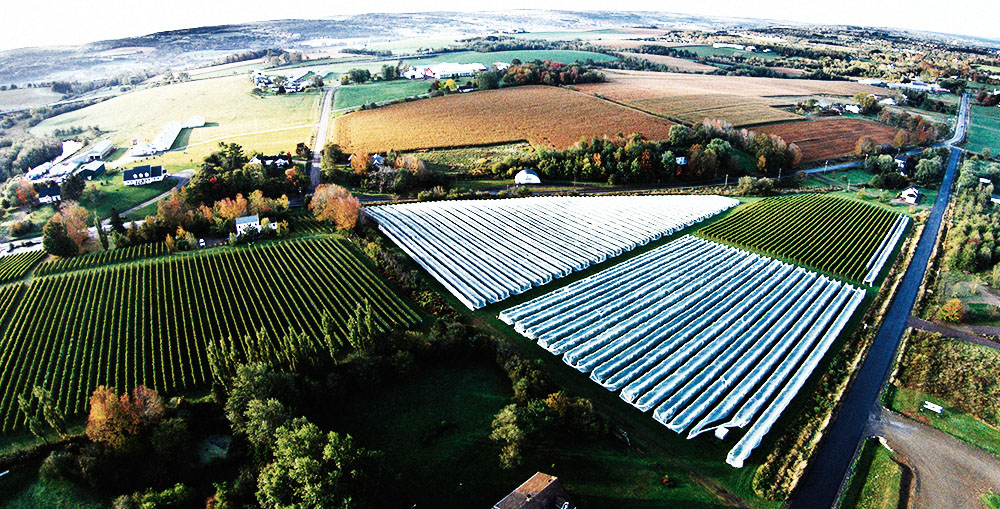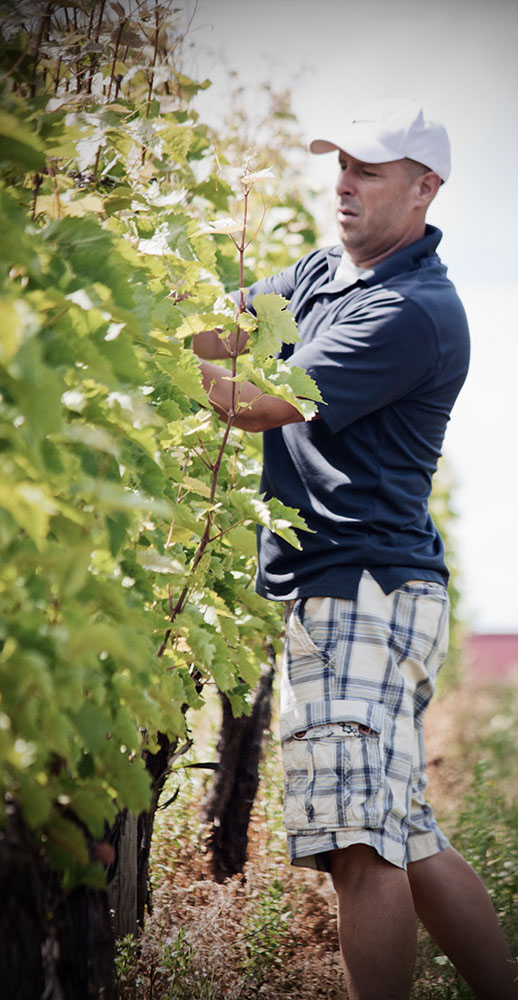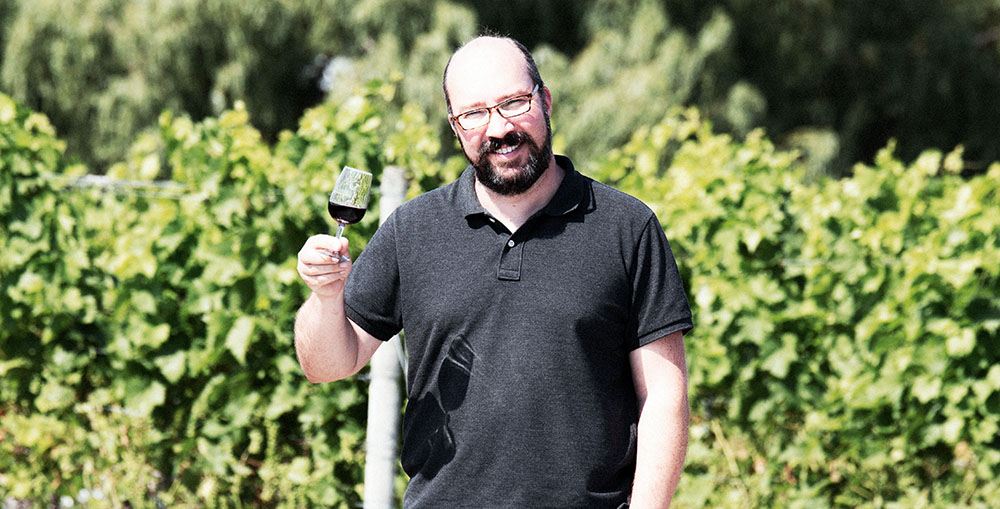
This year marks the eighth release of the signature Nova Scotia Tidal Bay appellation wines. The now well-established success of this concept, unique in Canada, has rested on the creation of strict new grape-growing and winemaking standards and the creation of an independent tasting panel, which must pass all wines that wish to bear the Tidal Bay designation.
These wines are designed to exemplify the unique qualities of Nova Scotia’s distinctive terroir. Characterized by moderate alcohol and a lighter, food-friendly style, they pair exceptionally well with shellfish and other delicate sea foods. Tidal Bay wines are well suited to emerging trends favouring lighter wines and continue to grow in popularity, both in Canada and overseas.
As a member of the Independent Tasting Panel since the appellation was brought into being eight years ago, I have been struck by both improving quality and also how consistently the wines have reflected the crispness and lively, fruity freshness of the appellation character. Over the last several years, Nova Scotia, as elsewhere, has experienced generally warmer climate conditions. Given the changing climatic conditions, I wondered what the winemakers might be doing to successfully adapt. To find out, I recently canvassed several Tidal Bay producers.
Simon Rafuse, winemaker at Blomidon Estate Winery, had this to say: “We have had a run of warmer vintages the past few years. It’s pushed us towards earlier picking for the TB [Tidal Bay]. This was a conscious decision to ensure we continue to make the style of Tidal Bay we like best: crisp, drier, citrus-y and zippy.”
Ben Swetnam of Avondale Sky Winery echoed the same thoughts. He noted: “Since the launch of Tidal Bay with the 2010 vintage, we have had unusually warm harvests. From 2010 to 2017, only 2014 and 2011 could be described as typical or cool vintages. The rest have been quite warm.
As a result, we’ve been gradually increasing the percentage of later-ripening varieties in our Tidal Bay blend. We planted 2.5 acres of Vidal to be able to increase the proportion of that higher-acid, later-ripening variety compared to L’Acadie Blanc, which ripens much earlier with lower acidity.
We’re also exploring newer varieties to include in our Tidal Bay blend. We have agreements with new growers who have planted Frontenac Blanc and Gris, which help to balance the lower-acid L’Acadie. We are also increasing our own plantings of vinifera with the potential to add some Chardonnay, Riesling and Sauvignon Blanc to the blend.”
Gina Haverstock of Gaspereau Vineyards also confirmed the perception of a warming trend. Like her colleagues, she singled out 2017 as a year requiring special adaptation: “I toned back on the aromatic component (New York Muscat) in our 2017 Tidal Bay. This is because the Vidal and Ortega were very expressive and aromatic — even more so, I would argue, than previously. This is of course due to a beautiful 2017 season. We went from 12 percent Muscat in our 2016 Tidal Bay to only 8 percent in the 2017 without giving up any aromatics in the overall blend.”
Haverstock also pointed out that warmer conditions were enabling better results with lower residual sweetness. In 2017, she stated: “I was able to draw back a bit on the residual sugar. In other words, the acid/sweetness balance that I strive to achieve every year in our Tidal Bay was reached at a lower residual sugar level due to a lower acidity in the blend.”
Jurg Stütz of Domaine de Gand Pré reported making a similar adjustment to tone down the aromatic Muscat in his blend and “bring out more of the finesse and delicate flavours of the other varieties.” John McLarty, owner and winemaker at Planters Ridge, stated that with riper grapes coming in, he had to keep a close eye on things to avoid exceeding permitted alcohol levels. He was not as concerned about dropping acidity, though, as he uses high components of both Frontenac Gris and Blanc, which have naturally higher acidity.
One way or another, all the winemakers I contacted have been making conscious adjustments to address warming conditions. Unfortunately, there may be an ironic twist to this story. Early this June, Nova Scotia was hit by a couple of wicked frosts. While it is still too early to be definitive, the 2018 vintage may present a very different picture.


Since moderate alcohol is one of the most important defining factors in the appellation character of these wines, the alcohol content has been included in the description of each wine.
Avondale Sky 2017, 9.6% ($22)
Very pale green in colour, this one opens on the nose with aromatic grapefruit and green herbal notes followed by mellower scents of stone fruit. Crisp sensations on the palate are like biting into a combination of white peach and green apple, evolving to a touch of citrus backed by signature Nova Scotia mineral and vibrant acidity on the delicately off-dry finish.
Domaine de Grand Pré 2017, 11% ($20)
Light green/straw in colour showing beguiling floral scents evincing rose petal perfume together with notes of ripe stone fruit. Green orchard fruit and stone fruit flavours show up in the mouth with apricot notes kicking on the back palate, supported by stony mineral grip and incisive acidity. A luscious, deftly balanced, harmonious wine.
Planters Ridge 2017, 11% ($21)
A blend of five varieties: l’Acadie, Frontenac Blanc, Frontenac Gris, Seyval Blanc and New York Muscat, this very pale green wine presents subtle white blossom scents with notes of fresh orchard fruit. Smooth and supple on the palate, it offers citrus, green apple and crisp stone fruit flavours, finishing with stony mineral and signature mouth-cleansing acidity.
Benjamin Bridge 2017, 10% ($22)
Very pale appearance, with delicate floral and yellow fruit scents and a faint but discernible herbal overtone. Very crisp entry on the palate, with grapefruit and green apple flavours, firm mineral and mouth-puckering acidity.
Mercator Vineyards 2017, Estate Grown, Wolfville, 11% ($25)
A blend of Vidal, l’Acadie Blanc and Petite Milo, this version reveals citrus and orchard fruit scents with a whiff of green herb. Green fruit dominates on the palate with Sauvignon-like gooseberry and secondary sappy green apple, an agreeable lick of mineral and bracingly refreshing acidity. A well-balanced, food-friendly style.
Luckett Vineyards 2017, 11% ($22)
Composed of four varieties: l’Acadie, Ortega, Seyval Blanc and Traminette, this one opens with fragrant fruit blossoms, green apple and minty herbal scents. Complex citrus, green apple and stone fruit flavours manifest themselves on the palate, with supple white peach and stony mineral lingering on the crisply refreshing finish. This is Luckett’s best Tidal Bay to date.
Lightfoot & Wolfville 2017, 10.5% ($22)
Pale straw colour, opening with lemon citrus, orchard fruit, subdued floral scent and a faint whiff of herb. Very crisp citrus and green apple, with drying mineral and a touch of peach on the crisply acidic finish. A leaner, food-friendly style, finishing just a touch off-dry.
Sainte-Famille 2017, 11% ($20)
Made from a blend of estate-grown Geisenheim 318, l’Acadie, Riesling, Seyval Blanc, Siegfried and Muscat, this wine opens with grapefruit, green orchard fruit and a light whiff of green herb on the nose. Clean citrus and sappy green apple flavours are backed by gravelly mineral and bright signature acidity. Green fruit notes linger on the finish.
Jost Vineyards 2017, 11% ($20)
Fragrant scents of fruit blossoms, ripe stone fruit and tropical fruit evolve to crisp lemon citrus and white peach flavours, supported by characteristic zesty acidity and drying mineral grip in the mouth. Finishing with the merest hint of residual sweetness, this is a deftly balanced wine to serve as an aperitif or to pair with hors d’oeuvres and lighter sea foods.
Blomidon Estate Winery 2017, 10.6% ($22)
The blend here is l’Acadie Blanc, Seyval Blanc and New York Muscat. Opens rather shyly on the nose though revealing delicate floral and stone fruit scents. Shifts on the palate to apple and lime citrus flavours with stony mineral and saliva-inducing acidity. A touch of crunchy white peach chimes in on the finish.
Gaspereau Vineyards 2017, 11% ($22)
The four varieties making up this blend are Seyval Blanc, Vidal, Ortega and New York Muscat. Crystal clear light green in colour, showing refined floral scents with subtle rose petal perfume and background yellow fruit. Flavours of green apple and stone fruit combine in the mouth with prickly zest and chalky mineral sensations. Finishes with a delicate touch of sweetness deftly balanced by crisp acidity and drying minerality.
